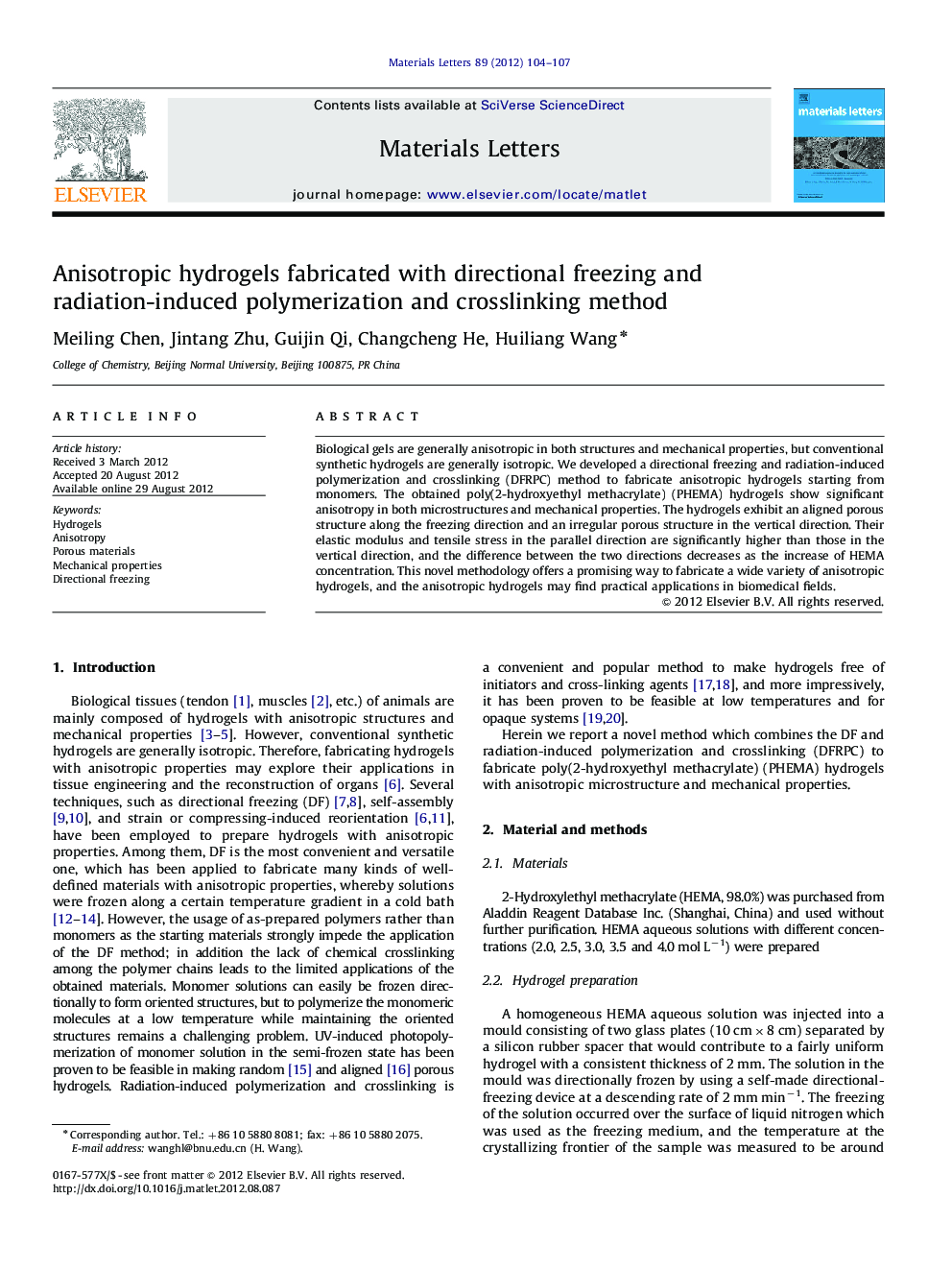| Article ID | Journal | Published Year | Pages | File Type |
|---|---|---|---|---|
| 1646215 | Materials Letters | 2012 | 4 Pages |
Biological gels are generally anisotropic in both structures and mechanical properties, but conventional synthetic hydrogels are generally isotropic. We developed a directional freezing and radiation-induced polymerization and crosslinking (DFRPC) method to fabricate anisotropic hydrogels starting from monomers. The obtained poly(2-hydroxyethyl methacrylate) (PHEMA) hydrogels show significant anisotropy in both microstructures and mechanical properties. The hydrogels exhibit an aligned porous structure along the freezing direction and an irregular porous structure in the vertical direction. Their elastic modulus and tensile stress in the parallel direction are significantly higher than those in the vertical direction, and the difference between the two directions decreases as the increase of HEMA concentration. This novel methodology offers a promising way to fabricate a wide variety of anisotropic hydrogels, and the anisotropic hydrogels may find practical applications in biomedical fields.
Graphical abstractFigure optionsDownload full-size imageDownload as PowerPoint slideHighlights► Directional freezing and radiation-induced polymerization and crosslinking (DFRPC) method. ► The hydrogels show anisotropic aligned porous microstructures. ► The hydrogels also show significant anisotropy in their mechanical properties. ► Higher elastic modulus and tensile stress in the direction parallel to the freezing direction.
